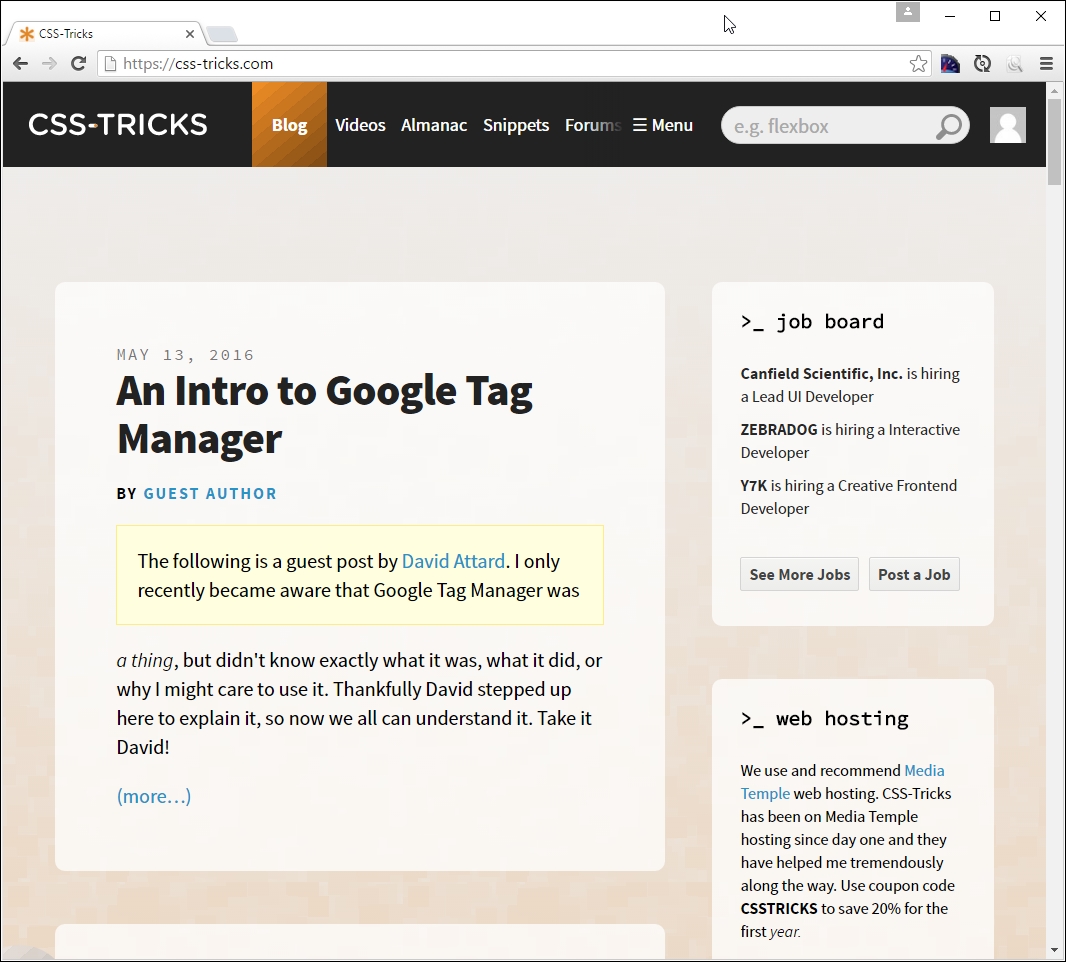Open a browser; let's go and visit some sites.
Now, you may think I've lost my marbles, but stay with me. I want to show you a few examples. Let's take a look at a couple of example sites at different screen widths. How about this example from my favorite coffee company, Starbucks:

Try resizing the browser window; if you get small enough, you will see something akin to this:

Here's another example—we cannot forget the site for the publisher of this book, Packt:

Try changing the size of your browser window. If we resize it enough, it will show this:

For our third and final example, let's go visit CSS Tricks, the site created by Chris Coyier, at http://www.css-tricks.com:

If we resize this to a smaller width, this is what we will get:

Now, what was the point of all that, I hear you ask? Well, it's simple. All of them use media queries in some form or other; CSS Tricks uses the queries built into WordPress, Packt's site is hosted using Drupal, and Starbucks' site...



